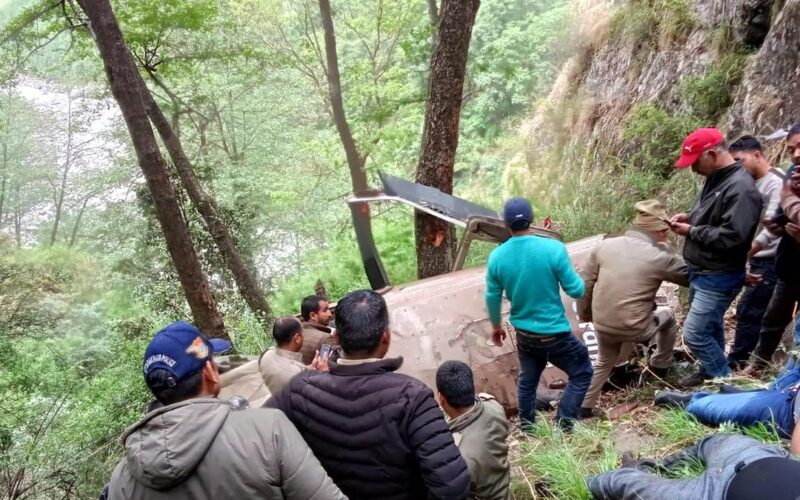Uttarkashi (National Times): A preliminary report into the fatal helicopter crash in Uttarakhand earlier this year has revealed that the aircraft’s main rotor collided with an overhead fibre cable before plunging down a hillside and coming to a halt against a tree. The accident claimed six lives.
According to the Aircraft Accident Investigation Bureau (AAIB), the chopper, a 17-year-old Bell 407 operated by Aerotrans Services Pvt Ltd, lost control mid-air while attempting to land on a highway stretch near Gangnani in Uttarkashi on May 8.
The aircraft had lifted off from the Kharsali helipad at 8:11 a.m. and crashed around 8:35 a.m., just 24 minutes into the flight. The pilot and five passengers were killed on impact, while one passenger survived but suffered serious injuries. There was no post-impact fire, the AAIB noted in its five-page assessment.
The report said the helicopter descended from its assigned cruising altitude and appeared to initiate an emergency landing along NH-34. During the descent, the rotor blade struck a fibre optic cable running alongside the road. The aircraft also collided with metallic roadside barriers before tumbling down a steep incline into a 250-foot-deep gorge, where it eventually came to rest against a tree.
Manufactured in 2008, the helicopter was powered by a Rolls Royce engine and was reportedly in operation under regular chartered routes in the region.
Authorities from the U.S. National Transportation Safety Board and Canada’s Transportation Safety Board are also participating in the investigation, having appointed representatives to assist with technical analysis. Coordination is ongoing between international and Indian officials to determine the root cause of the crash.
Further details and findings will be made public upon completion of the final report, AAIB said, adding that the focus remains on uncovering any contributing factors related to operational procedures or infrastructure hazards in the mountainous region.
The crash has prompted concerns over safety measures in areas where pilgrimage-related air traffic is high and where overhead lines often run dangerously close to flight paths.

